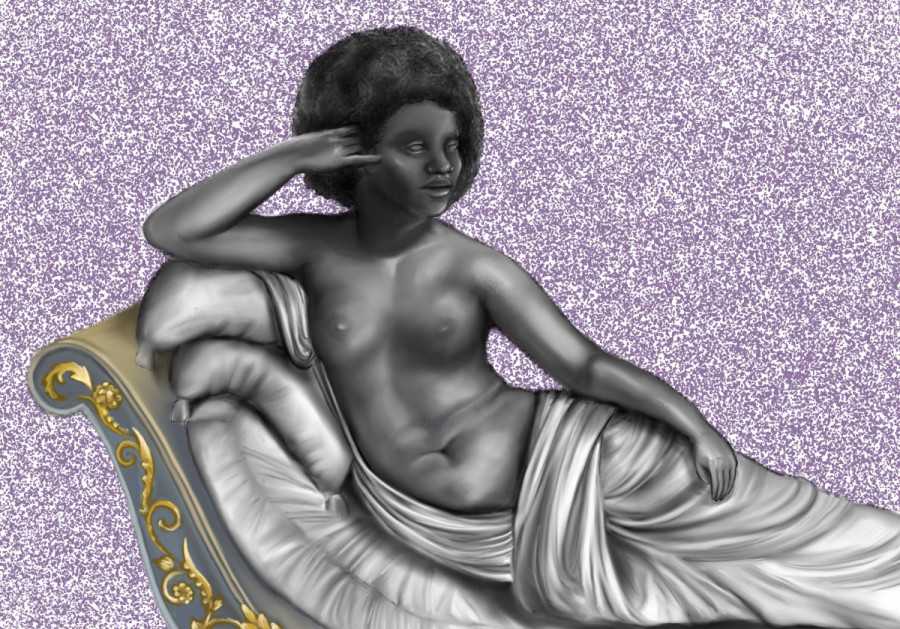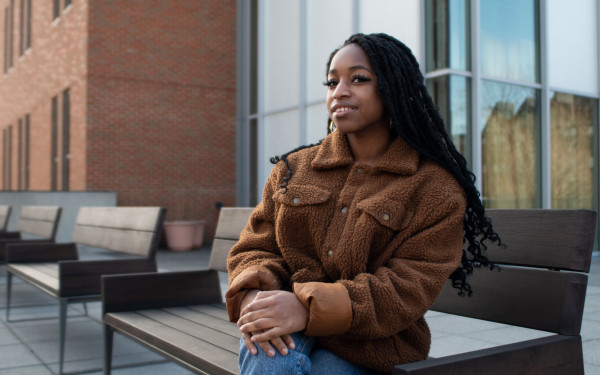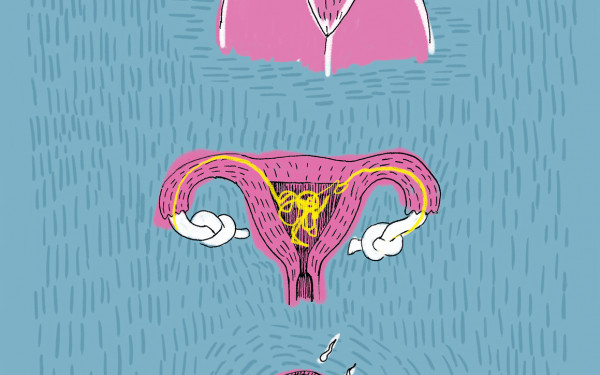Not Your Jezebel
Black Women’s Bodies and Desirability Politics
I was only 10 years old when puberty hit me like a ton of bricks.
My body was changing; somehow, it seemed to have meant that it became okay for me to be sexualized and talked about despite my age.
By the time I was 19, I, like approximately 4.7 million other women in Canada, had been sexually harassed and sexually assaulted.
I wasn’t even safe from this objectification at work. In fact, when not directly encouraged to boost business, my objectification was perpetuated by my supervisors.
When I was a medical secretary, I was offered a breast reduction in lieu of a raise, despite having never discussed or complained about my body, breasts or back to neither my boss nor my colleagues. Still, that did nothing to stop my 60-something-year-old white male boss from making the suggestion. I was gone soon after.
There is, in essence, no way to exist in a femme Black body without inviting unjustified criticism and the punitive eyes of the white supremacist gaze. If the allure of what makes us a target is our very skin, how may we ever be free?
In her book Fearing the Black Body: The Racial Origins of Fat Phobia, author, Chancellor’s Fellow and Associate Professor of Sociology at the University of California, Sabrina Strings, reveals the colonial and racial provenance of the modern discourse on fatness.
There is a fear of fat Black women, Strings explains, that stems from historical narratives that exploded during the Enlightenment era; it relates fatness to savagery and racial inferiority.
“When we're in the [slave trade] colonies, we're noticing that Africans are sensuous,” said String in a 2020 NPR interview about the colonizer’s minds. “They love sex, and they love food. And for this reason, they tend to be too fat. Europeans, we have rational self-control. This is what makes us the premier race of the world. So in terms of body size, we should be slender, and we should watch what we eat.”
This type of thinking still echoes in modern discourse surrounding bodies and results in damaging beliefs surrounding health and beauty. Body size is thus weaponized as a tool of distinction for discrimination.
The body mass index is one of the many weapons used in the war on Black bodies. “[It] imposes white male body norms on the world,” according to Strings in a 2022 WBUR article.
This discriminatory practice is “also present in the fashion industry through waist trainers and body shapers that sought to emulate the Black body while at the same time constricting it,” Strings added.
In August 2022, nepotism baby and film critic Lena Wilson reviewed Amandla Stenberg’s performance in Bodies Bodies Bodies. She stated that the film “doubles as a 95-minute advertisement for cleavage.”
Stenberg later responded in an Instagram video that “it’s quite surprising the amount of commentary I receive on my boobs,” and that their character’s fashion was an artistic choice made with the costume designer. “I do get tired of people talking about my chest—there seems to be a lot of unwarranted conversation about my chest.”
I know this to be true because I have personally had the same experience. Whether I wear a turtleneck, a dress or a low-cut shirt, people will shamelessly and unwarrantedly comment on my body. This is all too common.
“Men talked about the size of my butt. There are people who were telling me I was angry. That stuff hurts, and it makes you sort of wonder, what are people seeing?” stated Michelle Obama in an interview with Oprah Winfrey. “They called me un-American, and this stuff sticks with you.”
Even she, the first lady of the United States, despite her status, education, title and caution, remained at the mercy of the commodification of Black femme bodies.
“The portrayal of Black women as lascivious by nature is an enduring stereotype,” states Ferris State University’s Jim Crow Museum. “The descriptive words associated with this stereotype are singular in their focus: seductive, alluring, worldly, beguiling, tempting, and lewd. Historically, white women, as a category, were portrayed as models of self-respect, self-control, and modesty—even sexual purity, but Black women were often portrayed as innately promiscuous, even predatory.” This contextualizes the birth of the Jezebel stereotype.
The Jezebel stereotype has been used as a tool in the dehumanization of Black women via our bodies. It ranges from incessant commentary on Chloe Bailey’s body, to the prevalence of the ebony category in porn searches, to the crusade against Megan Thee Stallion’s testimonial credibility based on her sexual history.
The scrutiny is only made worse when coupled with fatness. Someone like Lizzo, for instance, who can play the flute and twerk at the same damn time, seems to be the poster child for “unhealthy” people. Yet, the likes of DJ Khaled, Rick Ross, Fat Joe, are not subjected to the same criticism or standards. That is, in its very essence, misogynoir.
These white supremacist techniques seek to sexualize Black women’s bodies to have more substantial grounds for our dismissal as people regardless of our status, education, skin tone or talent. Meanwhile, we are celebrated only when we graciously tolerate hate and disrespect despite our many pleas to be believed and protected.
Such was the case of Saartjie (Sarah) Baartman, a Black woman whose brain, skeleton and sexual organs remained on display in a Paris museum until 1974 despite dying in 1815.
Baartman was deemed a freak show for her accentuated buttocks. Orphaned, the father of her dead child murdered by a Dutch colonist, she was left with no choice but to become a travelling circus exhibit, not dissimilar to the human zoo of Tervuren.
Baartman was a woman who lost everything from her dignity to her ability to rest in peace. The continued exploitation of her trauma further exemplifies Strings’ analysis of the simultaneous fascination and constriction of the Black body. Today, Baartman remains a prime example of colonial exploitation and the commodification of Black people.
I am tired of being treated like a display. My value is seen or dismissed based on my desirability, and that same desirability only serves as a tool for my objectification.
The cases of Amandla Stenberg, Megan Thee Stallion, Chloe Bailey, Lizzo and even Michelle Obama are but contemporary examples of the stripping of Black women’s basic human dignity through the commodification and sexualization of our bodies.
What am I meant to do if my desirability comes at the cost of my humanity? The problem isn’t Lizzo’s weight, Megan’s sexual history, Chloe’s unapologetic sexuality or my boobs in a tank top during summer.
The root problem is the normalization of colonial beauty standards and white supremacist control techniques. It is high time for Black women to be free from the tyrannical gaze of white supremacy.
This article originally appeared in Volume 43, Issue 9, published January 10, 2023.


_600_832_s.png)




